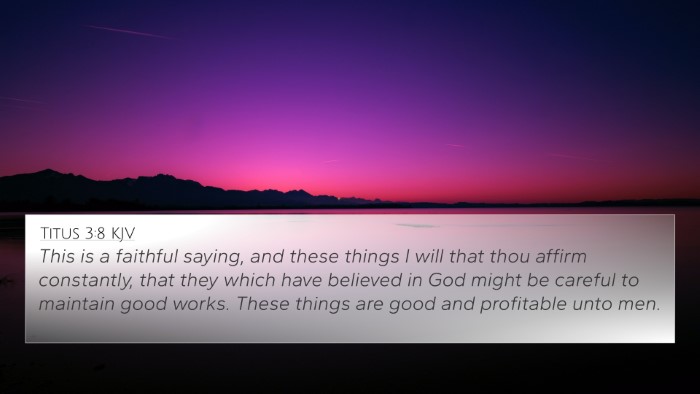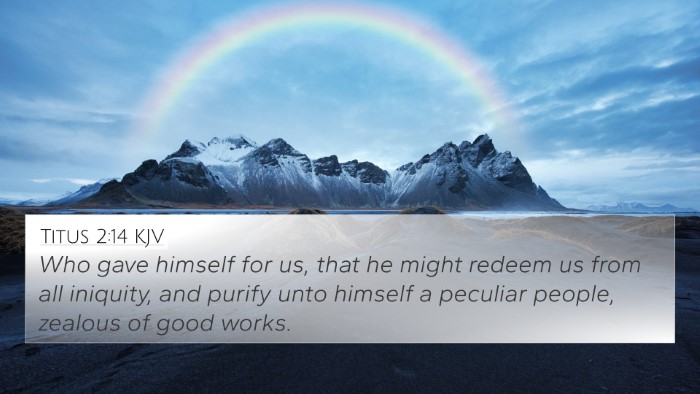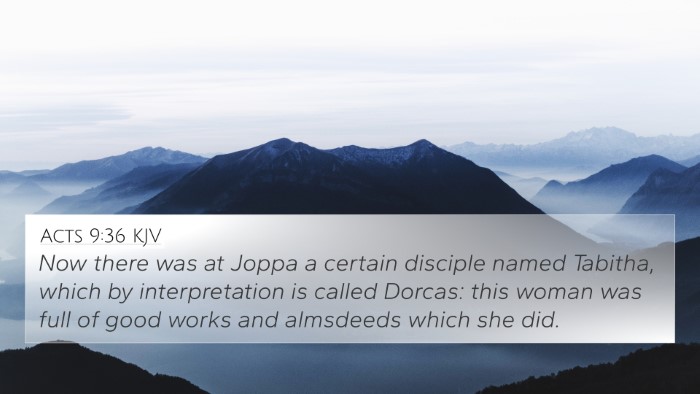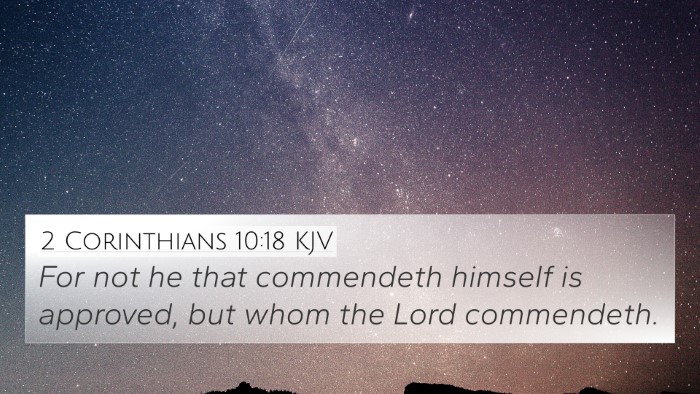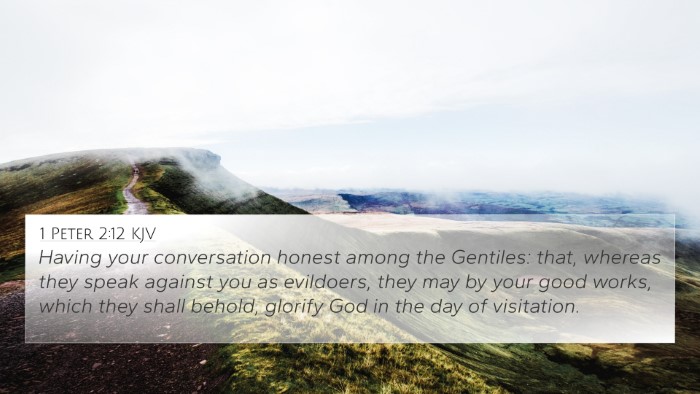Understanding Mark 14:6
Mark 14:6 states: “And Jesus said, ‘Let her alone; why trouble ye her? she hath wrought a good work on me.’” This passage is rich with meaning and significant implications for understanding the character of Jesus, the nature of true worship, and the reactions of those around Him.
Summary of Commentary Insights
Combining insights from notable public domain commentaries including those by Matthew Henry, Albert Barnes, and Adam Clarke, we gain a comprehensive understanding of the nuances within this verse.
Contextual Background
This verse occurs during the account of a woman anointing Jesus with precious ointment. This action brings forth a contrast between the perceived value of material possessions and the worth of sincere acts of devotion. It is significant to note that this event leads to diverse reactions from those who witness it, notably the disciples who criticize the woman for her perceived waste.
Key Themes
- Defending the Act of Worship: Jesus' defense of the woman illustrates His values of genuine worship and devotion over material concerns. Henry highlights that the act was noble and worthy, which Jesus immediately confirms.
- The Good Work: The term "a good work" refers not just to any deed but specifically to acts of love and homage towards Christ. Barnes emphasizes that what may appear trivial to some is indeed significant and valuable to God.
- Judgment vs. Acceptance: The criticism from the disciples speaks to a broader theme of judgment in comparison to acceptance of sincere gestures. Clarke notes this dichotomy, prompting readers to reflect on their own attitudes towards acts of faith.
Bible Verse Cross-References
This verse can be cross-referenced with several other biblical passages that share similar themes of worship, devotion, and the nature of Jesus's ministry:
- Matthew 26:10-13: This passage offers a parallel account of the same event, elaborating on Jesus' response and the implications of the woman's actions.
- John 12:3: Another account that provides context on the identity of the woman (Mary) and the purpose of the anointing.
- Luke 7:36-50: An earlier incident of a woman anointing Jesus, showcasing themes of forgiveness and devotion.
- 1 Samuel 16:7: God sees the heart rather than outward appearances, resonating with Jesus’ defense of the woman.
- Psalm 116:12-14: Reflects on the nature of gratitude toward God, paralleling the woman’s faithful act.
- Isaiah 61:3: The theme of anointing in a broader messianic context.
- Mark 14:7: Jesus mentions the poor, revealing a teaching moment on priorities in giving and serving.
Thematic Connections
When we consider the connections between these verses, we see recurring themes:
- Sincerity in Worship: The importance of sincere expressions of love and devotion towards God as reflected in both the anointing and other biblical experiences.
- Misunderstanding by Others: Often those who may not understand acts of devotion toward God may be critical, much like the disciples in Mark 14:6.
- Recognition of True Worth: Jesus’s acknowledgment of the woman's actions as ‘good work’ challenges the reader to discern what is truly valuable in their faith journey.
Conclusion
Mark 14:6 offers profound insights into the nature of worship, the response of Jesus to acts of love, and the tensions that arise in a faith community. By engaging with related scriptures and understanding the context, believers find deeper connections to their faith and practical applications in their own lives. As seen in various commentaries, this verse encourages reflection on what constitutes a ‘good work’ in the eyes of Christ, urging believers to embrace acts of devotion that glorify God without concern for societal judgment.
Further Study: Tools for Bible Cross-Referencing
For those interested in exploring cross-references in the Bible further, consider using:
- Bible Concordance
- Cross-reference Bible Study Guides
- Comprehensive Bible Cross-reference Materials
- Bible Reference Resources
Exploring Connections
When pondering over how to find cross-references in the Bible, look into methods that highlight connections within different books, such as:
- Identifying connections between the Old and New Testaments: Noting where themes converge and diverge.
- Comparative studies of the Gospels: Analyzing how each evangelist presents similar events.
- Cross-referencing Psalms with New Testament teachings: This leads to rich theological understanding.









